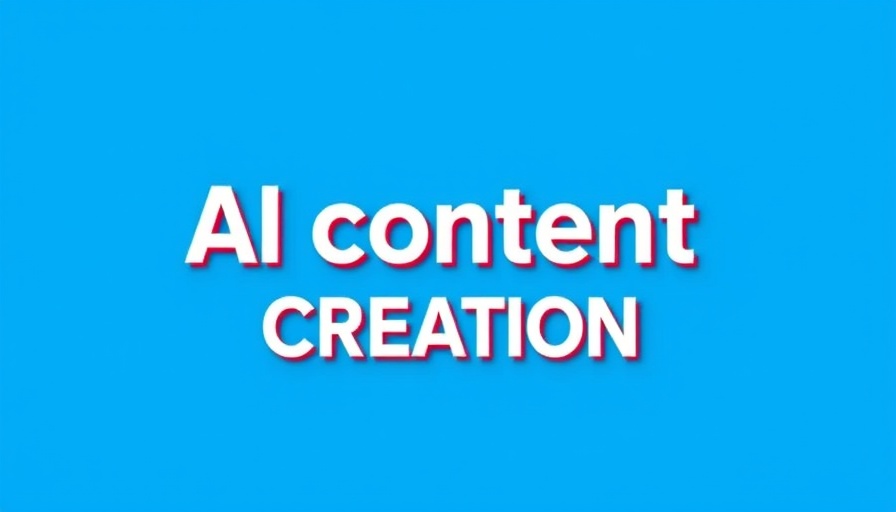
Unlocking the Potential of AI in Content Creation
In the ever-evolving landscape of content marketing, artificial intelligence (AI) is revolutionizing how businesses approach creating high-quality content. As small and medium-sized enterprises (SMEs) face resource constraints, leveraging AI can streamline processes and enhance productivity. The journey of implementing AI content strategies is not just about automation—it's about honing skills and harnessing tools to produce outstanding material that resonates with readers.
Beyond the Hype: The Reality of AI in Marketing
Many might assume that AI can completely replace human writers, but that is far from the truth. A successful strategy involves a blend of technology and human creativity. Business owners using AI should understand that while these tools can assist in generating ideas or first drafts, the final touch requires a human's insight and nuanced understanding of the audience. According to industry experts, about 90% of your success will derive from selecting the right topics—those simple informational nuggets fit for AI's capabilities—rather than relying on the technology alone.
Crafting Your Content Process: Steps for Success
To effectively incorporate AI into your content creation process, it helps to outline a structured editorial workflow. Here’s a general framework based on successful practices:
- Topic Selection: Choose subjects that are informative and straightforward.
- Briefing and Outlining: Develop a concise guide for your article, which can assist AI tools in drafting.
- Drafting: Use AI to generate the first draft, keeping in mind that thorough editing and customization will be needed afterward.
- Editing and Enhancing: Line edit for clarity, add internal links, and ensure the use of metadata.
- Final Touches: Optimize for WordPress, incorporating relevant shortcodes and keywords.
The Importance of Human Touch in AI Content
Despite AI's efficiency, human input is crucial in ensuring the content is relatable and addresses the audience's needs. This oversight is particularly important as SMEs often aim to create genuine connections with their customers. For instance, let’s say you run a local bakery. An AI-generated article on the benefits of locally sourced ingredients could form the foundation, but your personal stories about farmers or unique recipes will create the emotional connection that drives engagement.
Embracing Imperfection: The Evolving Process
It’s important for businesses to recognize that the content creation process using AI is not about achieving perfection at every step but rather about continuous improvement. Each iteration of your content strategy—whether through AI or human effort—offers insights. Measurement and analysis will inform what works and what needs refining, providing opportunities for growth and experimentation.
Staying Ahead of Trends: Future Predictions in AI Content
As AI technology continues to advance, staying adaptable is key. Future developments will likely enhance AI’s ability to create even more sophisticated and engaging content. By keeping abreast of these trends, small businesses can harness new tools to remain competitive. Whether it is in personalized marketing strategies or straightforward informational content, those who blend AI with creative human storytelling will be the ones benefiting most from these innovations.
Conclusion: Taking the Next Step with AI
For small and medium-sized businesses looking to optimize their content generation, AI presents a valuable opportunity. By understanding the integration of these tools within a structured process and emphasizing human creativity, businesses can craft content that not only engages but also informs and connects. Take the initiative now. Explore how AI can transform your content approach and engage your audience more effectively!
 Add Row
Add Row  Add
Add 



Write A Comment